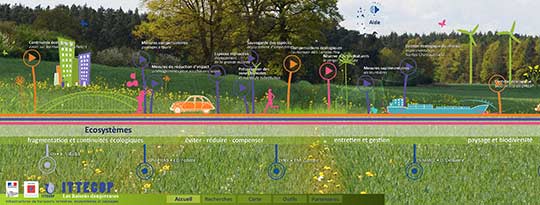TRANS-FER
- Analysis of the ecological transparency of railway infrastructures and recommendations
The chosen methodology consists in analyzing 4 railway sections of about 20 km long each: 2 on fully fenced high-speed lines in Burgundy and Lorraine and 2 on non-fenced conventional railroads in Franche-Comté and Rhône-Alpes. The selected sites are therefore all located in Eastern France and were chosen to cross a significant proportion of forest environments and agricultural environments in mosaic.
For each site, the transparency of the infrastructures was evaluated for 5/6 complementary taxonomic groups with different dispersal modalities: "large" terrestrial mammals, small terrestrial mammals (abandoned due to the haemorrhagic fever epidemic in bank vole), chiropterans, amphibians and 2 groups of insects
To do this, sampling was undertaken in order to evaluate the crossings in the current railway section (i.e. above the rails, excluding crossing structures) and in different categories of structures (overpasses and underpasses: wildlife crossings, re-establishment of agricultural roads and small roads, hydraulic structures, etc.) for the different taxonomic groups mentioned.
The methods implemented by Ecosphere used various classic techniques for capturing or recording clues: use of photographic traps (large mammals) and use of ultrasound recorders for chiropterans.
The MNHN (Service du patrimoine naturel) and the CNRS in Moulis collaborated to evaluate the transparency of the sections using landscape genetics techniques via the molecular tool. By collecting DNA from individuals of several populations located on both sides of the railroad lines, the analyses made it possible to measure the degree of cut of the tracks. Three species were studied: an amphibian (Salamander), a butterfly (Myrtil) and a Carabid beetle (Féronie noire).

